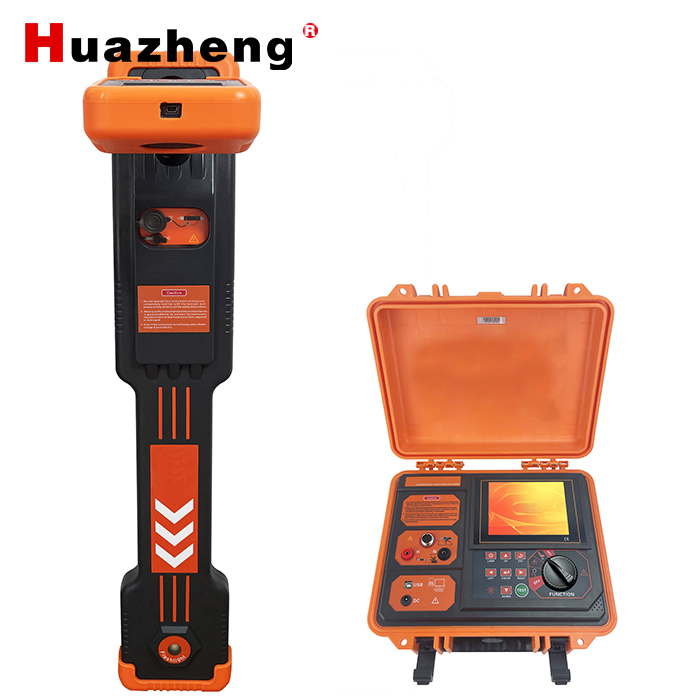I. Routine maintenance and inspection
(1) Appearance inspection of switch cabinet.
The switch cabinet shell has no deformation or damage; the protective paint has no serious rust, damage or peeling; the cabinet is firmly installed and the appearance is clean and free of debris; the nameplate and logo of the switch cabinet are neatly pasted and have not fallen off.
(2) Check the operating status parameters of the switch cabinet.
Instruments and meter indications are normal (compared with daily operating values, there is no or little difference and corresponds to the equipment status).
(3) The relevant components, electrical contacts, wires, and cables of the switch cabinet do not exceed the specified temperature.
Use an infrared thermometer to measure the operating temperature of visible relevant components, electrical contacts, wires, and cables ≤ 60°C, and there is no odor in the cabinet.
(4) Whether the switch position, indicator light indication, and instrument display are correct, and whether the position of each transfer switch is normal.
The switch opening and closing positions are correct, there is no alarm indication, and the transfer switch is in the specified position.
II. Annual planned inspection and maintenance
(1) Inspect, clean and eliminate various defects found during daily inspections of the cabinet shell.
1) Wipe with alcohol and white cotton cloth to ensure there is no dust or stains.
2) The protective paint must not be severely rusted, damaged or peeling off, otherwise rust removal and repainting must be carried out.
(2) Inspection and maintenance of cable room.
1) The cable hole is well sealed.
2) The cable plug fixing screws are not loose.
3) The cable identification plate has not fallen off, and the cable phase sequence color code has not fallen off.
4) The cable room should be dry and free of condensation, and should be cleaned and dusted.
5) Wipe the insulator with alcohol and white cotton cloth to ensure that there is no dust or stains.
6) The ground wire is not loose and the connection is firm.
(3) Check the grounding knife switch.
Manually operate the grounding knife switch for one cycle, the switch operates normally, there is no jamming, and the switch position and panel position indication are normal.
(4) Inspection and maintenance of circuit breaker room components.
1) Rock the main circuit breaker to the exit position, use a trolley to pull it out of the cabin, and check whether there are burn marks or traces of discharge on the isolation contacts of the primary circuit and its connecting copper bars; see if it needs to be polished with sandpaper, depending on the situation. Wipe with alcohol cotton cloth.
2) Evenly apply 0.5~1mm thick conductive paste on the isolation contact fingers of the main circuit breaker.
3) Tighten each bolt on the primary circuit according to the torque requirements. After tightening the bolts, check that the spring gasket should be flat. After completing the tightening operation, mark a locking line on each bolt on the primary circuit.
4) Use alcohol and white cotton cloth to wipe all components inside the circuit breaker to ensure there is no dust or stains.
5) Push the main circuit breaker into the circuit breaker compartment with a trolley and shake it to the test position. Manually operate the closing and opening circuit for one cycle. The circuit breaker operates normally without jamming. The mechanical position indication, circuit breaker opening and closing position indication, and spring storage Both energy storage and energy storage indications are normal.
6) After checking that everything is correct, swing it to the input position and perform the operation according to the power supply stop requirements.
(5) Inspection and maintenance of the secondary circuit room.
1) Check the secondary wiring: the wiring is tight and the line number is clear.
2) Check that the cabinet is clean: there is no dust or foreign matter.
3) If necessary, clean the dust and tighten the secondary wire.
III. Annual electrical test
(1) Insulation test of main circuit of circuit breaker.
Measured with a 2500V megger, the measured value is greater than 50MΩ.
(2) Power frequency AC withstand voltage test (circuit breaker main circuit to ground, phases and fractures).
1) After overhaul: The test voltage value shall be as specified.
2) During operation: The test voltage value is 0.8 times the specified value.
(3) Insulation test of auxiliary circuit and control circuit.
Measured with a 500V megger, the measured value is greater than 2 MΩ.
IV. Troubleshooting when necessary
(1) Correction of circuit breaker working position.
Apply conductive glue or Vaseline to the inner ring of the moving contact, then push the handcart into the working position, and then pull it out. At this time, use a caliper on the static contact to measure the effective bite depth of the visible moving and static contacts. It should be 15~25mm.
(2) Circuit breaker maintenance and replacement.
Replace according to the manufacturer's specific parameter requirements.
(3) Maintenance and replacement of instruments and meters.
Replace according to the manufacturer's specific parameter requirements.
HZ-6000 Intelligent Cable Pipe Detector
